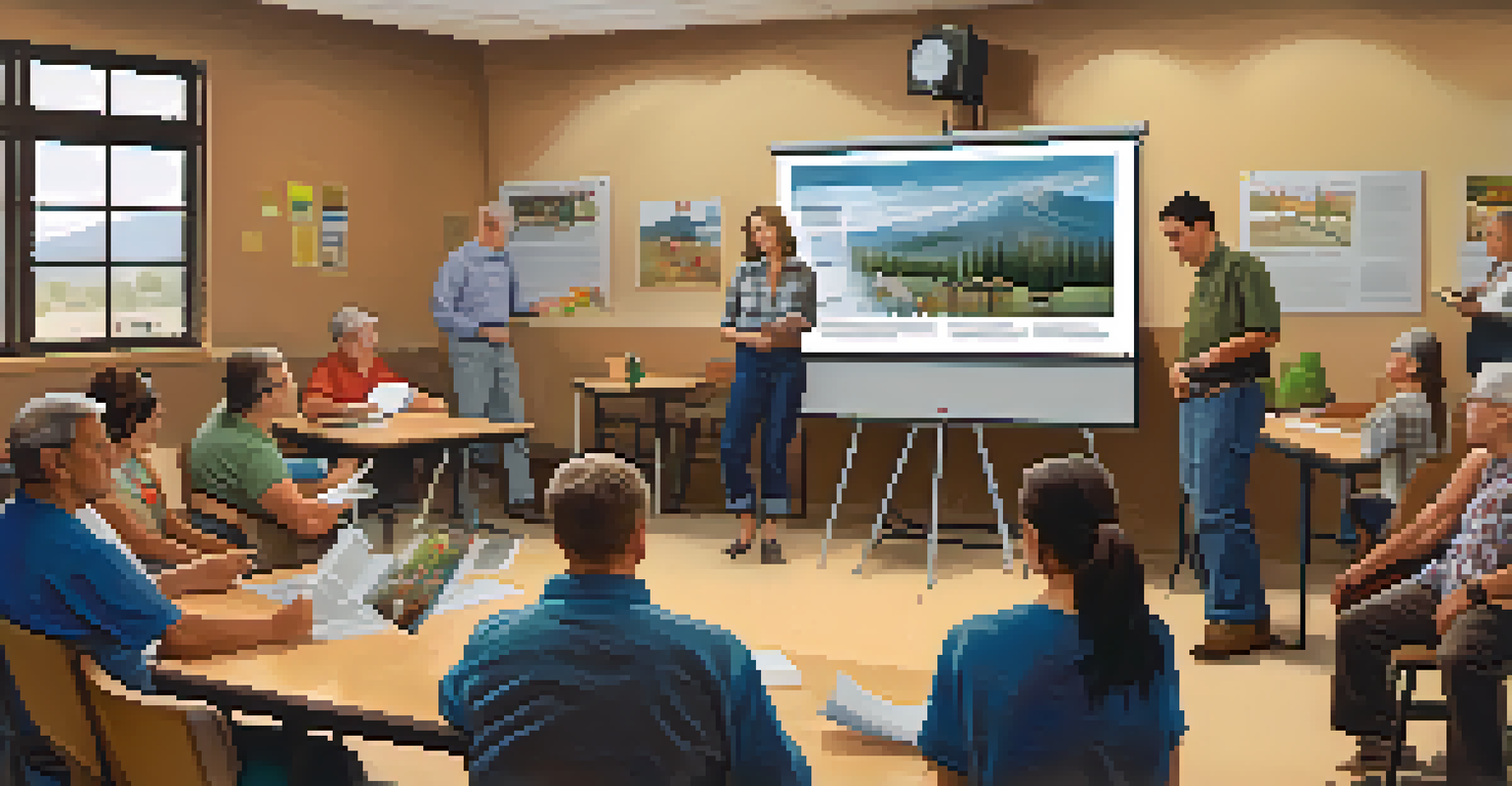Wildfire Preparedness Tips for Colorado Homeowners

Understand Your Wildfire Risk in Colorado
Colorado's diverse landscapes make it particularly susceptible to wildfires, especially in areas with dry vegetation and high winds. Understanding your specific area's risk can be the first step in preparing your home. Local fire departments often provide resources and maps highlighting zones that are more prone to wildfires.
The best way to predict the future is to create it.
Take time to research the history of wildfires in your vicinity. If your neighborhood has experienced fires in the past, it may be wise to prioritize preparedness measures. Additionally, keep abreast of local weather patterns and fire alerts, as these can change rapidly.
By recognizing your wildfire risk, you can implement targeted strategies to protect your home and family, ensuring you are not caught off guard when conditions become favorable for a fire.
Create a Defensible Space Around Your Home
A defensible space refers to the area around your home that has been modified to reduce the risk of fire spreading. This space typically extends 30 feet from your home and should be free of flammable materials like dry leaves and dead plants. Regularly trimming trees and shrubs can also help minimize fire hazards.

Consider using fire-resistant landscaping materials, such as gravel or stone, which can slow down the spread of fire. Additionally, maintaining a healthy lawn can act as a buffer against flames. Remember, a well-maintained defensible space not only protects your home but also contributes to the safety of your neighborhood.
Assess Wildfire Risk in Your Area
Understanding your specific wildfire risk is essential for taking effective preparedness measures.
By taking these steps, you're not just safeguarding your property; you're also helping to create a community that is better prepared for potential wildfires.
Have an Emergency Kit Ready at All Times
Having an emergency kit ready can make a world of difference during a wildfire evacuation. Your kit should include essential items like water, non-perishable food, medications, and important documents. Don't forget about personal items like clothing, pet supplies, and a flashlight.
An ounce of prevention is worth a pound of cure.
Consider including a portable phone charger and a battery-operated radio to stay updated on emergency announcements. It's also wise to have a list of emergency contacts and local evacuation routes easily accessible, so you can act quickly if necessary.
Regularly check and update your emergency kit, especially as seasons change or if your family’s needs change. This proactive approach can provide peace of mind and ensure you're ready for any situation.
Create a Family Evacuation Plan
In the event of a wildfire, having a clear evacuation plan can save valuable time and reduce panic. Gather your family and discuss the best routes to take, which is especially important in areas where roads may be blocked. Designate a meeting point outside your neighborhood where everyone can regroup if separated.
Practice your evacuation plan regularly to ensure that everyone understands their role. This practice can also help you identify any areas that need improvement, such as the need for faster access to your emergency kit.
Create a Family Evacuation Plan
Having a clear evacuation plan can save valuable time and reduce panic during a wildfire emergency.
Remember, communication is key. Ensure that every family member has a way to reach each other during an emergency, whether it's through cell phones or a designated emergency contact.
Stay Informed with Local Alerts and Resources
Staying informed is crucial during wildfire season. Sign up for local alerts through your county's emergency management office, which can provide real-time updates on fire conditions and evacuations. Many communities also have mobile apps that offer notifications related to wildfires.
In addition to alerts, familiarize yourself with local resources, such as community centers that may serve as evacuation points. Knowing where to go can save time and help you feel more secure during an emergency.
Lastly, consider joining local community groups focused on wildfire preparedness. These groups often share valuable information and support each other in times of crisis.
Prepare Your Home with Fire-Resistant Materials
Investing in fire-resistant building materials can significantly reduce the risk of your home catching fire. Options include non-combustible siding, tempered glass windows, and fire-rated roofing materials. While these may come at a higher upfront cost, they can prove invaluable in protecting your home during a wildfire.
Make sure to also check your home's vents and openings. Installing spark arresters on chimneys and using metal mesh screens can help keep embers from entering your home. Regular maintenance of your roof and gutters will also prevent debris build-up, which can ignite during a fire.
Invest in Fire-Resistant Materials
Using fire-resistant building materials can significantly enhance your home's protection against wildfires.
By making these upgrades, you're taking a proactive step in ensuring your home stands a better chance against a wildfire.
Educate Yourself and Your Neighbors
Education is a powerful tool in wildfire preparedness. Attend local workshops or webinars offered by fire departments or community organizations to learn more about fire safety and prevention. The more you know, the better prepared you and your family will be.
Don't stop at just educating yourself; share what you learn with your neighbors. Host a casual get-together to discuss wildfire preparedness strategies and share resources. A united community is often more resilient in the face of disasters.

Encouraging conversations about wildfire risks can also help foster a culture of preparedness, making your entire neighborhood safer.
Regularly Review and Update Your Preparedness Plans
Preparedness is not a one-time effort; it requires regular reviews and updates. At least once a year, revisit your emergency kit and evacuation plan to ensure everything is current and functional. This is particularly important if you have moved recently or if family dynamics have changed.
Consider conducting drills with your family to keep everyone familiar with the plan. Practicing can highlight any areas for improvement, such as the need for faster access to emergency supplies.
By making preparedness a regular part of your life, you not only ensure your safety but also instill confidence in your family and community.